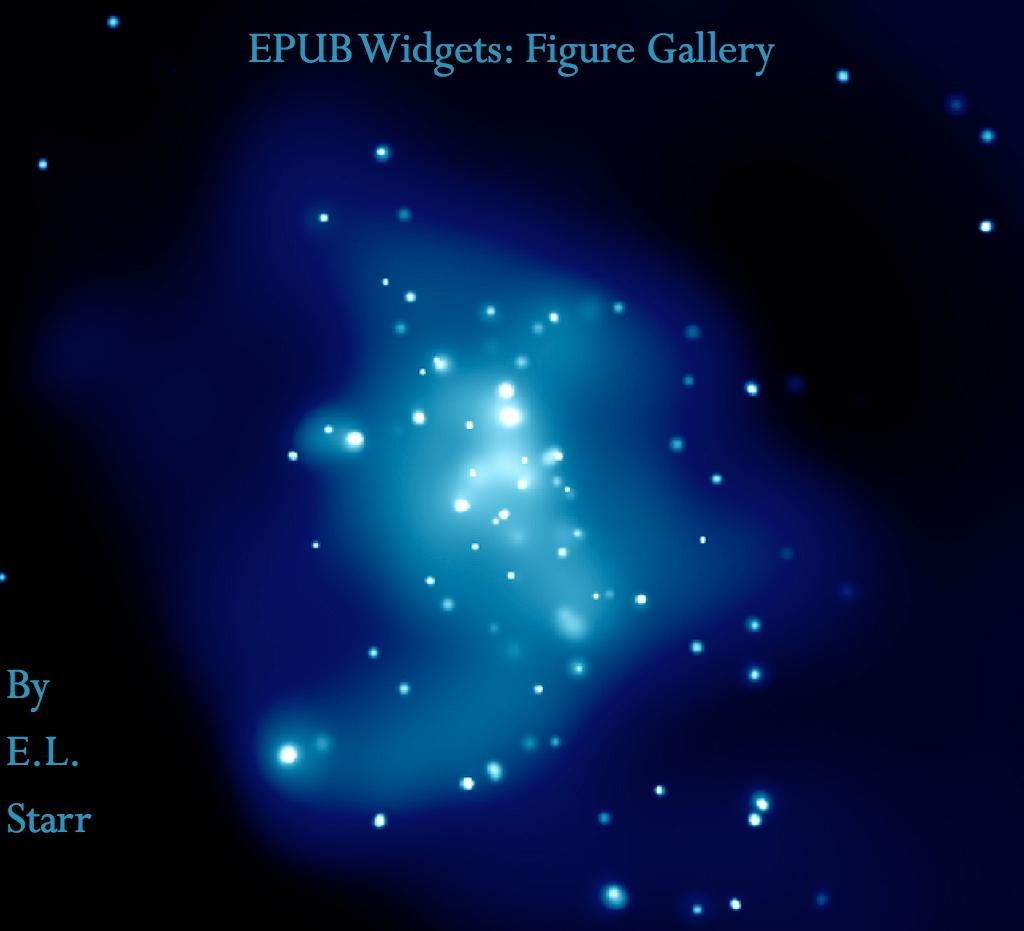

Phases of the Moon
New Moon
By the modern definition, New Moon occurs when the Moon and Sun are at the same geocentric ecliptic longitude. The part of the Moon facing us is completely in shadow then. Pictured here is the traditional New Moon, the earliest visible waxing crescent, which signals the start of a new month in many lunar and lunisolar calendars.
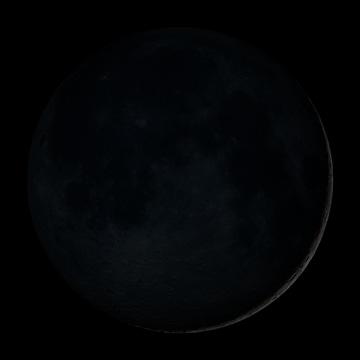
Waxing Crescent
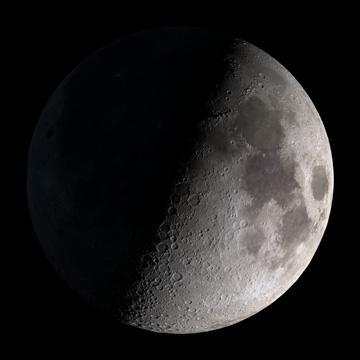
Visible toward the southwest in early evening.
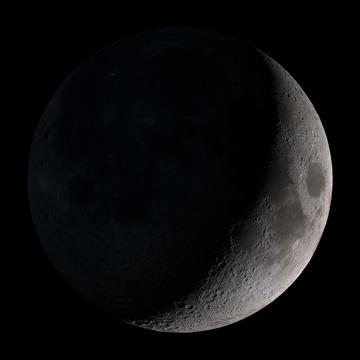
First Quarter
Visible high in the southern sky in early evening.
Waxing Gibbous
Visible to the southeast in early evening, up for most of the night.
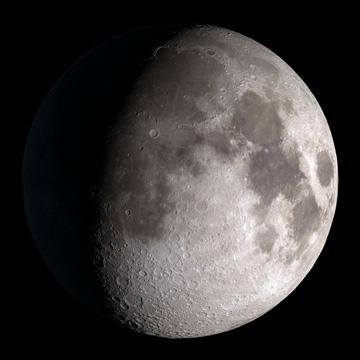
Full Moon
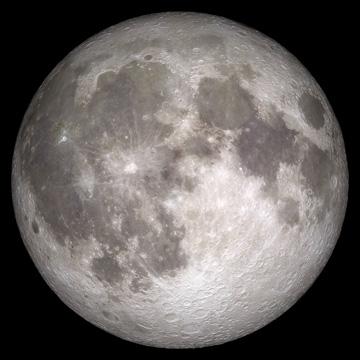
Rises at sunset, high in the sky around midnight. Visible all night.
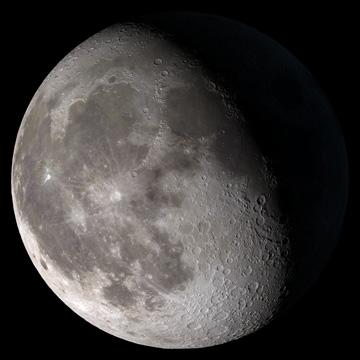
Waning Gibbous
Rises after sunset, high in the sky after midnight, visible to the southwest after sunrise.
Third Quarter
Rises around midnight, visible to the south after sunrise.
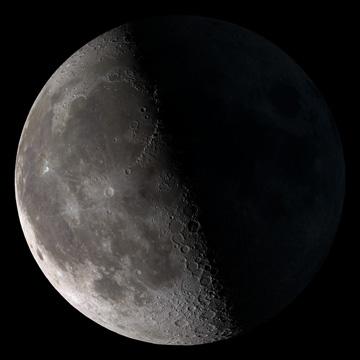
Waning Crescent
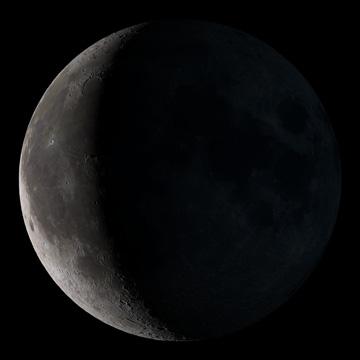
Low to the east before sunrise.
When the Sun and Moon are aligned on the same side of the Earth the Moon is "new", and the side of the Moon visible from Earth is not illuminated by the Sun. As the Moon waxes (the amount of illuminated surface as seen from Earth is increasing), the lunar phases progress from new moon, crescent moon, first-quarter moon, gibbous moon and full moon phases, before returning through the gibbous moon, third-quarter (or last quarter) moon, crescent moon and new moon phases. The terms old moon and new moon are interchangeable, although new moon is more common. Half moon is often used to mean the first- and third-quarter moons, while the term 'quarter' refers to the extent of the moon's cycle around the Earth, not its shape.
When a sphere is illuminated on one hemisphere and viewed from a different angle, the portion of the illuminated area that is visible will have a two-dimensional shape defined by the intersection of an ellipse and circle (where the major axis of the ellipse coincides with a diameter of the circle). If the half-ellipse is convex with respect to the half-circle, then the shape will be gibbous (bulging outwards), whereas if the half-ellipse is concave with respect to the half-circle, then the shape will be a crescent. When a crescent Moon occurs, the phenomenon of Earthshine may be apparent, where the night side of the Moon faintly reflects light from the Earth.
In the northern hemisphere, if the left side of the Moon is dark then the light part is growing, and the Moon is referred to as waxing (moving towards a full moon). If the right side of the Moon is dark then the light part is shrinking, and the Moon is referred to as waning (moving towards a new moon). Assuming that the viewer is in the northern hemisphere, the right portion of the Moon is the part that is always growing (i.e., if the right side is dark, the Moon is growing darker; if the right side is lit, the Moon is growing lighter). A simple mnemonic for the effect is that a waning Moon becomes increasingly like the letter "C", while a waxing Moon becomes a "D", and the "n" in waning appears in the alphabet before the "x" in waxing - as does C before D. In the southern hemisphere the Moon is observed upside down (compared with viewing from the northern hemisphere), and the opposite sides appear to grow (wax) and shrink (wane).
